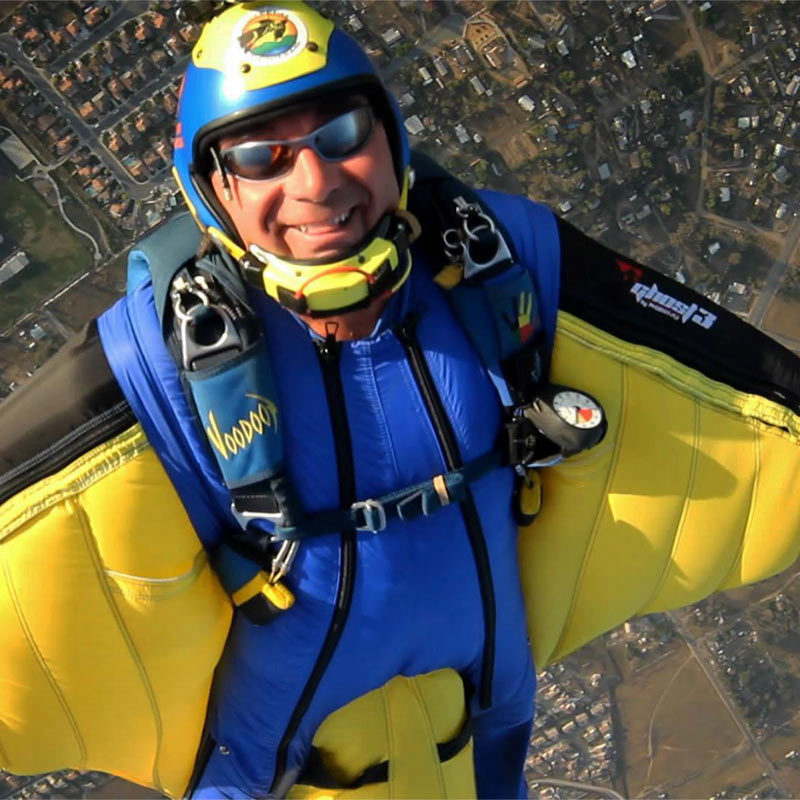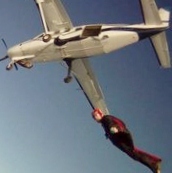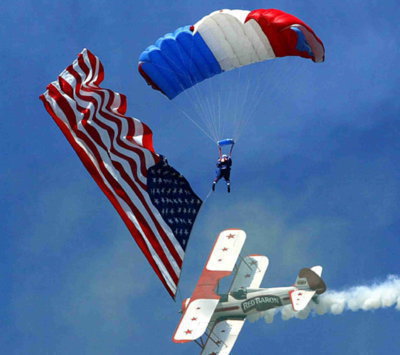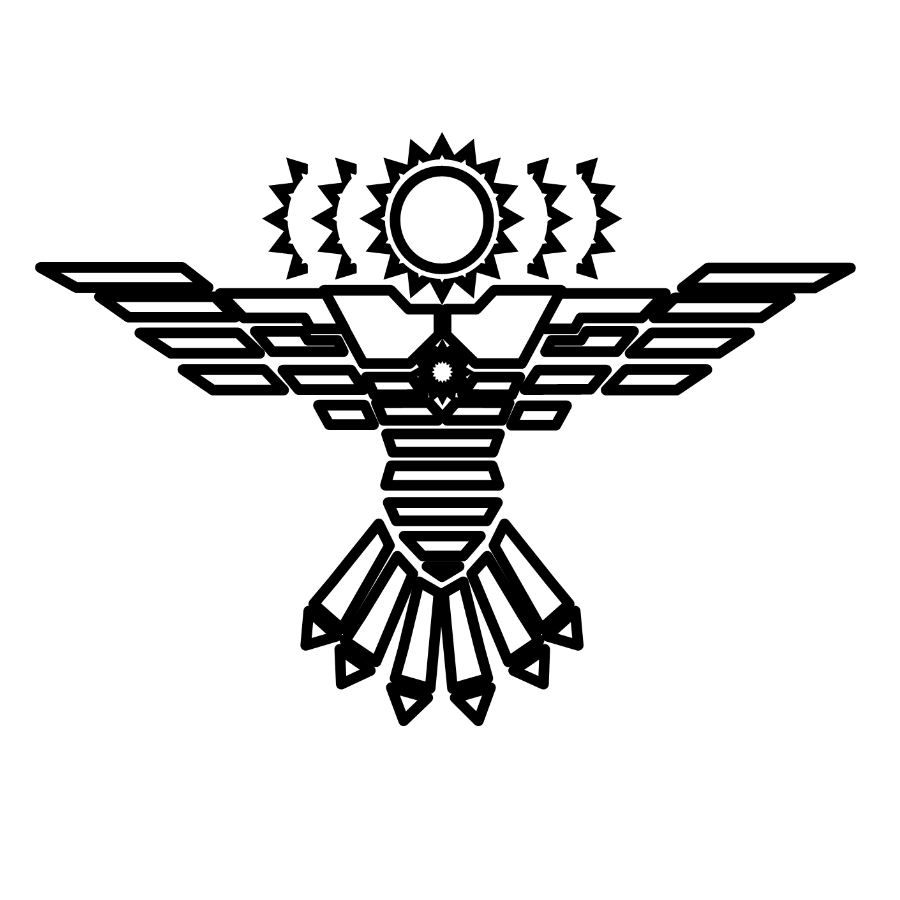Recommended Posts
QuoteIMO, the vidiot is 100% in the wrong here
Of course he is. The point that everyone is missing is that the more experienced jumper on the more manuverable canopy is responsible for handling that canopy properly in any circumstance. Be it bailing right after you initiate your turn, or 50 ft off the deck doing 75mph, if you put yourself out there as being able to 'handle' that canopy, then you better be able to 'handle' it in any circumstance.
I don't care if it's a student, or a guy with 50 jump, or just some dumb asshole, people make mistakes, if you're good enough to fly the hot canopy, part of that includes being good enough to take care of yourself, and everyone else out there.
The simple fact is, if you intend to do something that differs greatly from what everyone else is doing, it's your job to make sure it's at nobody elses risk. Who cares where they are, what they're doing there, or where they're supposed to be, the others persons error would not effect you if you were flying a canopy at a similar speed. When you fly a much faster canopy, it is your responsibility to account for everyone esle, no matter how wrong they may be.
The whole thread is absurd. Fucking Bolas with his 'modern carve' argument, like that makes a difference to anything, going twice as fast as everyone esle is twice as fast, regardless of how you get there. 'Modern carve'? Really? Any idea why modern swoopers go 3x as far as toggle whippers? Because their turns get them up to a higher speed. Whatever 'safety advantage' you think you gained by swooping 'modern' style, you lost when you doubled the ultimate speed of your swoop. It's a zero sum gain, get used to it, and stop sounding like a tool who thinks that he's better than most. You're not. I don't even know you, and I can say you're not.
Everyone else who won't get off the swooping in the pattern gig, are you afraid of actual progress or what? The swooping is the easy part to fix. Yes, a percentage of canopy collisions are caused by swoopers hitting non-swoopers, and we could eliminate them 100% by not mixing swoopers and non-swoopers. Look at the manifest for any load. If there is one jumper who is not intending to swoop, nobody is. Done, MOVE ON.
How about the rest of the canopy collisions, the ones not invovling swooping in any way? How do we fix those? We can't just eliminate the problem like the swooping deal, this one is going to take some real thought, planning, and hard work. Any interest in moving forward and trying to find a way to keep the non-swoopers from flying into each other? How do we re-train the current crop of jumpers? How do we train the upcoming students to produce licensed jumpers who won't need re-training? How do we get EVERYONE on board with this?
These are the real and productive questions that we should be focusing on, not bickering about swooping and what it can, and cannot, be compared to. It's the least of our problems, both in the actual scope of the problem, and quite frankly the scope of the solution.
Bolas 5
QuoteThe whole thread is absurd. Fucking Bolas with his 'modern carve' argument, like that makes a difference to anything, going twice as fast as everyone esle is twice as fast, regardless of how you get there. 'Modern carve'? Really? Any idea why modern swoopers go 3x as far as toggle whippers? Because their turns get them up to a higher speed. Whatever 'safety advantage' you think you gained by swooping 'modern' style, you lost when you doubled the ultimate speed of your swoop. It's a zero sum gain, get used to it, and stop sounding like a tool who thinks that he's better than most. You're not. I don't even know you, and I can say you're not.
So you see no additional safety element gained by doing a longer turn from a higher altitude which grants more options for corrections/aborts over a low toggle/riser hook?
The avoided situation DSE mentioned that just happened at Elsinore would suggest otherwise.
QuoteQuoteThe whole thread is absurd. Fucking Bolas with his 'modern carve' argument, like that makes a difference to anything, going twice as fast as everyone esle is twice as fast, regardless of how you get there. 'Modern carve'? Really? Any idea why modern swoopers go 3x as far as toggle whippers? Because their turns get them up to a higher speed. Whatever 'safety advantage' you think you gained by swooping 'modern' style, you lost when you doubled the ultimate speed of your swoop. It's a zero sum gain, get used to it, and stop sounding like a tool who thinks that he's better than most. You're not. I don't even know you, and I can say you're not.
So you see no additional safety element gained by doing a longer turn from a higher altitude which grants more options for corrections/aborts over a low toggle/riser hook?
The avoided situation DSE mentioned that just happened at Elsinore would suggest otherwise.
Do you see any advantage to anyone other than yourself to you going faster in the pattern than people around you?
~ If you choke a Smurf, what color does it turn? ~
DSE 3
Quote
The avoided situation DSE mentioned that just happened at Elsinore would suggest otherwise.
I saw it as dumb luck combined with experience/skill. How do you view it?
Bolas 5
QuoteQuote
The avoided situation DSE mentioned that just happened at Elsinore would suggest otherwise.
I saw it as dumb luck combined with experience/skill. How do you view it?
I view it as had he been doing a toggle spiral, or a low toggle/riser hook we'd have had another collision.
Hopefully the swooper had practiced aborts prior to this. if so: experience/skill mostly.
If ya can't be good, look good, if that fails, make 'em laugh.
Bolas 5
QuoteQuoteQuoteThe whole thread is absurd. Fucking Bolas with his 'modern carve' argument, like that makes a difference to anything, going twice as fast as everyone esle is twice as fast, regardless of how you get there. 'Modern carve'? Really? Any idea why modern swoopers go 3x as far as toggle whippers? Because their turns get them up to a higher speed. Whatever 'safety advantage' you think you gained by swooping 'modern' style, you lost when you doubled the ultimate speed of your swoop. It's a zero sum gain, get used to it, and stop sounding like a tool who thinks that he's better than most. You're not. I don't even know you, and I can say you're not.
So you see no additional safety element gained by doing a longer turn from a higher altitude which grants more options for corrections/aborts over a low toggle/riser hook?
The avoided situation DSE mentioned that just happened at Elsinore would suggest otherwise.
Do you see any advantage to anyone other than yourself to you going faster in the pattern than people around you?
Who said anything about being in the pattern? I'm talking about with time or space separation.
If ya can't be good, look good, if that fails, make 'em laugh.
Liemberg 0
QuoteSo how are a Tetrahedron and FMD mutually exclusive?
In terms of an enforceable RULE they are, even if they point in the same direction. Then again, pointing in the same direction is what they would do, +99% of the time.
The argument of the thing being tied down, or not well maintained or broken is not valid. If a DZ is big enough for traffic problems caused by different landing directions and they have a tetrahedron, they'd better also have a system in place to make sure it isn't tied down and is in working order once jumping starts. Just like your pilot is supposed to kick the tires and walk around the plane- removing those red flags.
If you want people to fly predictable patterns those patterns should be completely clear for everyone involved from the very first moment they can see the target area from under canopy.
Of course, having a tetrahedron does not exclude severe and gruesome punishment for any 'mad skilz' type that thinks 270s through the pattern are cool, if well executed...
Remember that the longest swoops are usually seen on days with little or no wind where there's the biggest chance of first man down to chose other directions than the novices / intermediates that follow him on bigger canopies would expect and may be comfortable with...
"Whoever in discussion adduces authority uses not intellect but memory." - Leonardo da Vinci
A thousand words...
obelixtim 100
Quote
People were safely landing canopies long before there was a PD Factory Team and the majority continues to do so.
--------------------------------------------------------------------------------
No they were not.
Sorry....YES they were....
QuoteI'd be willing to bet there were more canopy collisions and near misses in the past
You'd be WRONG again.....
QuoteThe lack of landing pattern discipline and bad behaviors are not new,
Yes they are, if you call the last 20 years since the advent of HP canopies "new". It wasn't till HP canopies came along that landing pattern discipline really went out the window.
To anyone who has been around for a while, that is clear. But you don't want to believe them....
Quoteit's just the speeds have changed.
True, and people haven't adapted to them.....except on a very limited basis....hence the ongoing problem.....
QuoteQuoteQuoteQuoteThe whole thread is absurd. Fucking Bolas with his 'modern carve' argument, like that makes a difference to anything, going twice as fast as everyone esle is twice as fast, regardless of how you get there. 'Modern carve'? Really? Any idea why modern swoopers go 3x as far as toggle whippers? Because their turns get them up to a higher speed. Whatever 'safety advantage' you think you gained by swooping 'modern' style, you lost when you doubled the ultimate speed of your swoop. It's a zero sum gain, get used to it, and stop sounding like a tool who thinks that he's better than most. You're not. I don't even know you, and I can say you're not.
So you see no additional safety element gained by doing a longer turn from a higher altitude which grants more options for corrections/aborts over a low toggle/riser hook?
The avoided situation DSE mentioned that just happened at Elsinore would suggest otherwise.
Do you see any advantage to anyone other than yourself to you going faster in the pattern than people around you?
Who said anything about being in the pattern? I'm talking about with time or space separation.
I'm talking about carving turns in the pattern...someone doing a speed inducing turn with other canopies in the air with them.
Do you see any advantage to doing a speed inducing turn, carving or otherwise with other people in the air doing their downwind, base or final?
Time and space separation safety is flawed , humans make mistakes and sometimes don't SEE traffic...that's not the question, it's not even debatable.
My TWO questions to you are:
Do you see any advantage to your doing a speed inducing turn with other canopies present.
Do you see ANY possibility, EVER... of you compromising the safety of another jumper who has not yet landed, by your doing such a turn?
Don't dodge the two questions Bolas, they are simple yes or no's.
~ If you choke a Smurf, what color does it turn? ~
QuoteIt all goes back to teaching and learning the fundamentals of PILOTING -- not canopy piloting but PILOTING -- because we are now flying non-powered aircraft that have more more in common with airplanes and gliders than they do with "parachutes" yet we keep training people as if everyone in the sport was still jumping rounds.
Robin,
A good post and you made some very good points. My question is what do we do now? It will take sometime for the training methods to spool up and make a difference. In the mean time people are dying.
Sparky
496095 0
So you see no additional safety element gained by doing a longer turn from a higher altitude which grants more options for corrections/aborts over a low toggle/riser hook?
The avoided situation DSE mentioned that just happened at Elsinore would suggest otherwise.
A longer carving turn covers more ground so you are more likely to wander into someone elses airspace unknowingly. A longer turn means a longer period of time since you cleared your airspace. A faster turn will not cover as much ground so provided you have cleared your airspace properly you will be pretty much turning on the spot, however less chance to abort during the turn.
It's 6 and two 3's.
The type of turn doesn't dictate if there is a canopy collision it's the pilot, both are just as likely to result in a canopy collision if the pilot is not aware.
Anyone jumping high performance parachutes should have the skills to do so.
Simple rules
Know how many canopies should be in the air (not very hard to do). If you cannot account for any don't swoop, be extra cautious.
If there is someone in the airspace lower than you (not necessarily just below) don't start turn even if you think you will be nowhere near them.
If you can't do both of these things then learn, it's good practice even if not swooping and just for the average jumper.
All of this on top of being extra cautious, people jumping these canopies should have the skill to do this.
Bolas- not having a go at you just using what you said as an example.
nigel99 143
It goes to show that peer pressure works, but also in some cases people simply do not have the same training or background. Hopefully this shows that you don't always need to ban people to secure change.
realpet 0
QuoteQuoteThe student wasn't where he should have been, but that's not the point
I disagree. There's little point to separating landing areas if people are going to say "it's ok,". No, it's not ok.
Of course, that doesn't mean that it's not GOING to happen, of course it is, people make mistakes. But it's definitely not ok and should be treated just as seriously as a knuckle head swooping in the regular pattern.
So if it had been a (any) jumper after a reserve ride, would your opinion also in that case be 'treat seriously'?
The reason I am asking is that yes I do agree that the separated landing areas for HP/non-HP should be respected but as long as flying the canopy is not powered flight, there can be several occasions in which the pilot can not (or does not have skills to) always be in a correct/agreed location in 3D-space and time.
- Petri
QuoteSo you see no additional safety element gained by doing a longer turn from a higher altitude which grants more options for corrections/aborts over a low toggle/riser hook?
You just don't listen, do you?
A lower, smaller turn would have had the swooper starting lower, much closer to same altitude as other jumpers in the pattern, allowing then to integrate in to the traffic better. A lower, smaller turn would have resulted in a less speed differential between the two jumpers, increasing reaction time. A lower, smaller turn would have encompassed a shorter duration and less degress of rotation, both reducing the opportunity for a collision.
Your bigger turn might give you more options for an abort, but it also has you floating around twice as high as other jumpers in the area. It also results in higher speeds, reducing your time to react to problems. It also uses multiple rotations, increasing your opportunities to run into someone.
It's a zero sum gain, just deal with it. For every step 'forward' you think your 'modern carve' takes, it takes a proportionate step back. It's no better or worse.
Toggle whippers coined the phrase 'femur' back in the day because that's what happened. You snapped a femur (or two) when you screwed up. Bigger, higher turns have reduced the number of 'femurs', but increased the number of outright deaths. Yes, you have more room for error with a higher turn, but you reach a much higher ultimate speed, so if you do blow it, it's way worse than a 'femur'.
Get off you high horse. I don't evem know why you think you should even be on a high horse. Everyone loses their traffic scan mid turn. The whole point of the swoop is to wind up the canopy with energy and then release it at just the right time, all while not over-doing it and going in, or under-doing it and air-balling. At some point, right as your canopy is really picking up speed, you have to focus on 'the gates'. Even if you don't have any gates, you have to pay attention to where you're going, not to outlying areas, the same areas where an errent jumper will be coming from if they wander into your path.
The majority of 'close calls' I had with the ground were when something off my line caught my attention. Unexpected movement in my periphery caused me to look away for a split second allowing my canopy to dip below the 'glide slope', and by the time I returned my attention to my line and realized I was low, it took more 'dig' than I was happy with to recover. The lesson is that when you get the canopy moving, you have to watch where you're going. You can no longer be watching for everyone else because you yourself are accelerating towards the ground. It turns into your own personal 'me time'.
On a standard approach, 'me time' starts about 2 seconds before the flare. If you're flying a stabilized final, and are 10 seconds from the flare, you can look away for 8 seconds and not have a problem. Take that concept to swooping, once your down on the deck, flying paralell with the ground you can look around with no problem, with the reason being that you're flight is now stabilzed in terms of descent rate, and decellerating in terms of airspeed. Few things can go wrong, those factors are reducing aling with your airspeed.
Go back in time 8 seconds, and you're diving hard at the ground a picking up speed. You cannot look around, account for others, or use any one of your 'many outs'. Like it or not, at some point you become comitted to what you are doing, and lose the ability to account for others.
Bolas 5
QuoteA lower, smaller turn would have had the swooper starting lower, much closer to same altitude as other jumpers in the pattern,
I didn't say larger turns are safer for others. I said longer turns.
Ex: a 270 started at 300 feet vs. one started at 600+ feet.
If ya can't be good, look good, if that fails, make 'em laugh.
Bolas 5
QuoteTime and space separation safety is flawed , humans make mistakes and sometimes don't SEE traffic...that's not the question, it's not even debatable.
If it's so flawed, why did the USPA create rules for it and even go so far as adding it to the DZs renewal?
There has only been ONE low collision (sadly a single fatality) where two jumpers aiming for different landing areas collided. The landing areas being right next to each other was likely a contributing factor as well.
All of the other collisions have occured where jumpers were landing in the same landing area: so not space, and definitely not time.
Quote
My TWO questions to you are:
Do you see any advantage to your doing a speed inducing turn with other canopies present.
Do you see ANY possibility, EVER... of you compromising the safety of another jumper who has not yet landed, by your doing such a turn?
Don't dodge the two questions Bolas, they are simple yes or no's.
They're also extremely loaded.
Do you see any advantage to your doing a skydive with other jumpers present?
Do we really want to establish the precedent of not compromising the safety of another jumper EVER?
If ya can't be good, look good, if that fails, make 'em laugh.
billvon 2,395
>from a higher altitude which grants more options for corrections/aborts
>over a low toggle/riser hook?
There is definitely a safety advantage - and that's an excellent option when you are swooping on your own pass, You just don't get to risk other people's lives doing it.
QuoteQuoteIt all goes back to teaching and learning the fundamentals of PILOTING -- not canopy piloting but PILOTING -- because we are now flying non-powered aircraft that have more more in common with airplanes and gliders than they do with "parachutes" yet we keep training people as if everyone in the sport was still jumping rounds.
Robin,
A good post and you made some very good points. My question is what do we do now? It will take sometime for the training methods to spool up and make a difference. In the mean time people are dying.
Sparky
Start emphasizing right-of-way right away:
Lower-slower-less-maneuverable always has right-of-way over higher-faster-more-maneuverable, and if you are higher/faster/more maneuverable it is YOUR responsibility to be the one that avoids, PERIOD, no ifs, ands, buts or other excuses.
This is the heart of aviation traffic management and it needs to be adopted for all parachuting traffic management.
We do not need to do this top-down, either, by changing the USPA ISP or creating a ROW BSR (amazing that there isn't one already, eh?). This can be done immediately by each and every drop zone -- as soon as its DZO and/or S&TAs have the vision and will to do it.
Doing it would be fairly easy technically: Print up or otherwise post the basic knowledge so that people can be educated about it, discuss it in morning staff briefings (this can be especially effective because it's the staffers who are often most guilty of ROW infractions), and otherwise just get the word out on:
* what ROW is
* how it is applied
*what the penalties are for violations (you know, other than DEATH or grievous bodily harm)
The penalty provision for violating right-of-way is a critical factor here -- and again, should be established by each DZ rather than USPA. Let the sport lead, not its bureaucracy. Off the top of my head, I'd say ROW infractions need to be dealt with the same way as automotive traffic infractions: fines first, followed by suspensions (AKA as grounding).
I think a one-jump-ticket fine would be a good first-offense penalty. Second offense, two jump tickets (or three or four). Third offense -- or ANY offense that results in a collision or an injury do the ROW violation -- grounding for anywhere from the rest of the day to whatever.
Again, do this at the local level, not the system level. That solves two problems:
1. It happens faster, so benefits can accrue more quickly (i.e., less blood and broken bones and funerals)
2. The local solutions serve as beta testing for whatever ROW policy/BSR might be adopted systemwide by USPA.
"The beginning of wisdom is to first call things by their right names."






.thumb.jpg.4bb795e2eaf21b8b300039a5e1ec7f92.jpg)

In any event...students may find themselves anywhere. Does it happen often? Certainly not. Is it acceptable? Surely not. Is it immediately correctable? No. You're going to have to wait til they land before any corrective training occurs.
Yeah...he was in the wingsuit corridor, which is why I deployed where/when I did (south of the dairy vs over the warehouses)
Winds were around 35mph @ 5000, and apparently he wanted to stay west of the runway. He ran his base leg over the glider runway to the west, and landed in the brush due west of 29L.
His thought process was sound, even if his actions weren't.
MFF students are taught slightly differently than AFFs are. _Generally_...they're better trained for patterns than AFF students are.
IMO, the vidiot is 100% in the wrong here. Weird winds affected everyone. A crosswind swoop might have seemed like a fun idea at the time...
Share this post
Link to post
Share on other sites